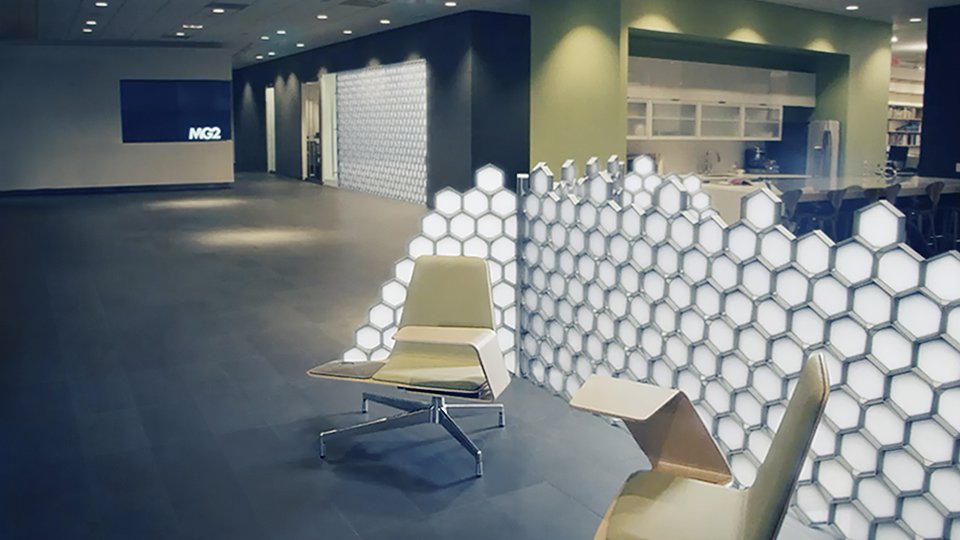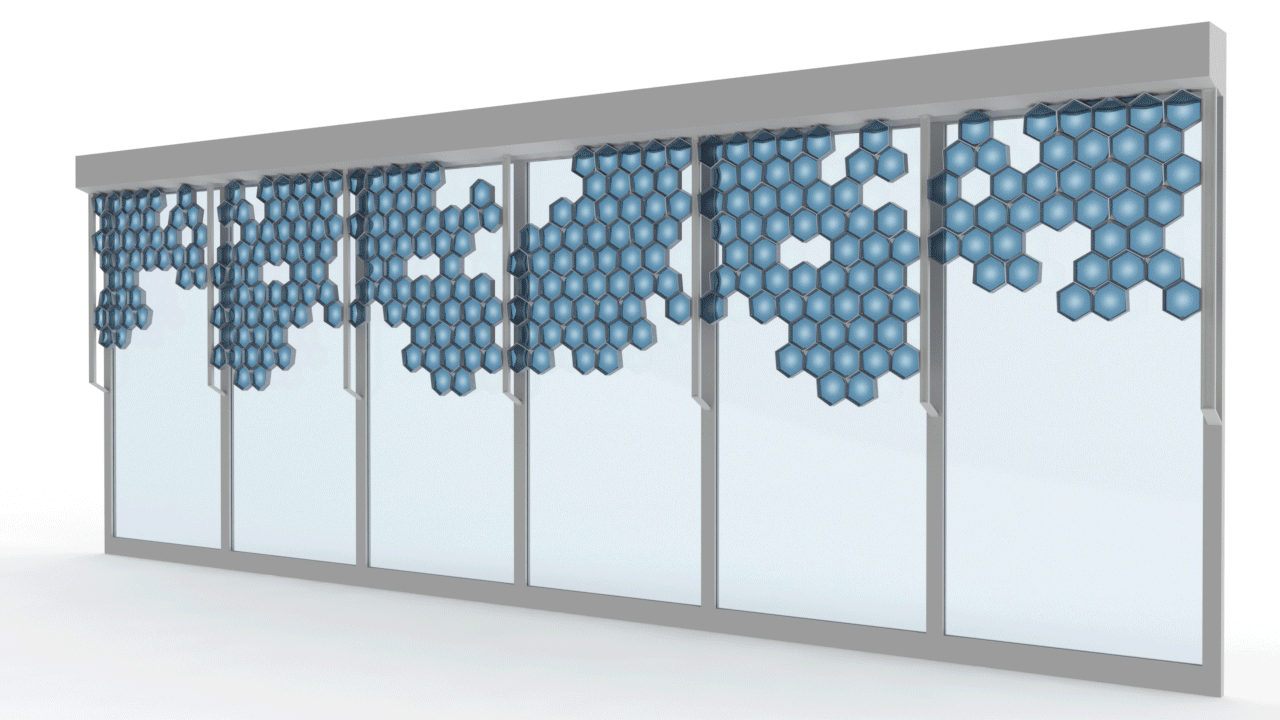
Mimic is a kinetic, responsive, active and passive, futurist office product concept that incorporates Eastman’s glass-laminated transparent 4K film. Initially imagined when I personally teamed up with the amazing designers at MulvannyG2 (now MG2), the concept evolved to incorporate behavioral queues, dynamic space sharing, and lighting sequences that respond to worker’s natural circadian rhythms. In the future we imagined that this platform could be deployed as a standalone installation (above), or a conference room wall, or even as a sun shade for heat mitigation. The name Mimic came from our need for an office environment that could anticipate our needs and respond dynamically, mimicking our behavior and making a better workplace overall.






